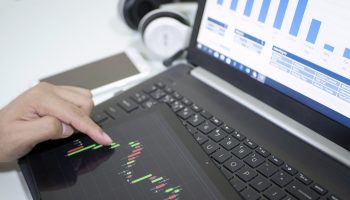There are many different Foreign exchange buying and selling strategies that professional traders utilize to exchange the markets and frequently gain great profits consequently. Normally the professional traders stay away from highly complicated buying and selling strategies and normally depend around the current cost data present on the market to be able to evaluate and predict the marketplace patterns. Here’s an introduction to some primary strategies adopted by professional Foreign exchange traders.
Automated / Robot Buying and selling: Buying and selling systems that are software based, otherwise known as Foreign exchange buying and selling robots, could be produced by converting the gathering of buying and selling rules into helpful code that any computer can utilize in the work. The pc will next run the code using buying and selling software which could scan markets to discover trades that match the needs prescribed through the buying and selling rules that are succumbed the code. Then trades get performed instantly through the trader’s broker.
Discretionary Buying and selling: The Discretionary buying and selling is extremely based mostly on a trader’s ‘gut’ feeling or upon the discretionary buying and selling skill to be able to evaluate as well as for buying and selling the markets. This type of buying and selling requires an extremely flexible approach than that is permitted in automated buying and selling however this type of buying and selling does demand some persistence and time for you to tweak the buying and selling skill.
Technical Buying and selling: This type of Technical buying and selling, or quite simply technical analysis, requires the research into the current market’s cost chart to help make the buying and selling decisions. These types of traders use and follow cost patterns as well as ‘technical signals’ through which they can trade the marketplace and therefore develop an advantage over other traders. There’s a particular common belief prevalent among the technical traders that the economical variables are in some way encompassed within the cost chart that shows the present cost movement.
Day Buying and selling: Traders who stick to the day-exchange the Foreign exchange buying and selling market are typically in and out of the market inside a day. This means they typically buy as well as sell currencies in an exceedingly short period of time in most cases they might be permitted to go in and out from a lot of trades inside a particular day.
Scalping: Scalping is really a process quite like the practice of day-buying and selling. It’s found to depend heavily on more frequent in addition to short-term trades that supersedes even day-buying and selling. A great and versatile buying and selling style which refers back to the procedure for jumping inside and outdoors from the market several occasions each day to be able to ‘scalp’ in order to scavenge some pips here and a few pips there, truly with little regard towards the keeping the logical stop-losses.
Swing / Position Buying and selling: Your Swing type of Foreign exchange buying and selling includes going for a very short view or perhaps a mid-term view for the market in most cases traders who’re in swing trade could be within the trade anytime varying from the couple of hrs and increasing as much as a few days or perhaps days. Such traders are usually interested to do business with such near-term daily chart momentum.






